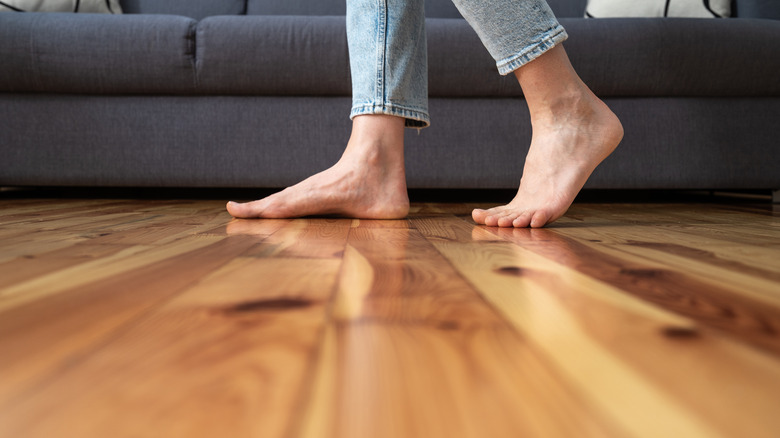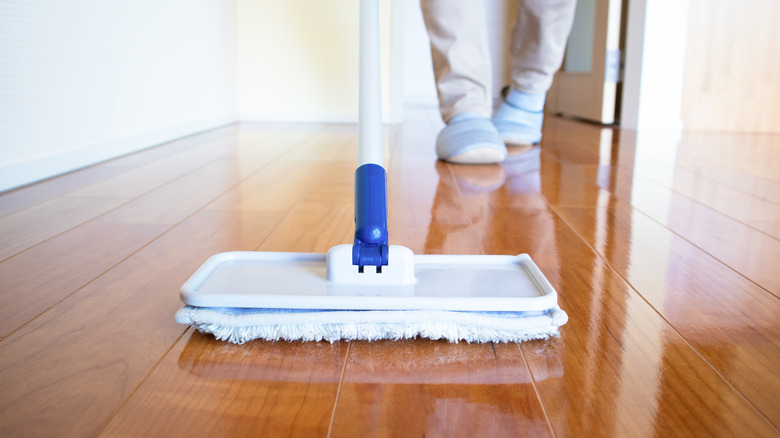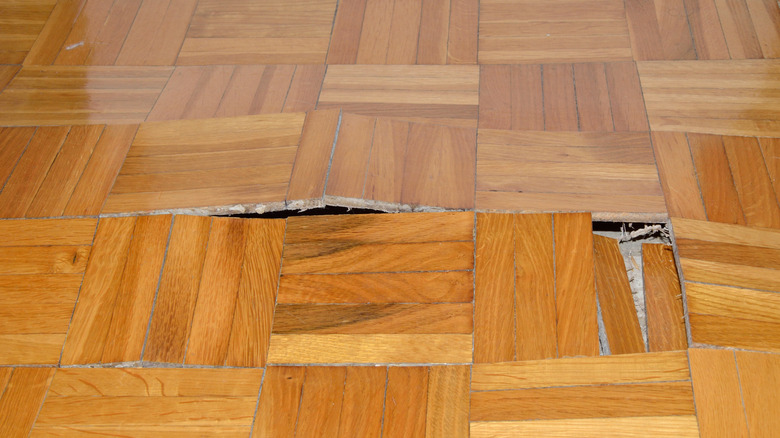The Best Ways To Prevent Humidity From Destroying Your Hardwood Floor
Picture this; you've splashed out on those gorgeous hardwood floors that leave friends green with envy. You glide across them daily, feeling like a million bucks. But alas, you step onto our beautiful timber floor one fateful day only to be welcomed by a creaking, groaning symphony of despair. In no time, those once-pristine surfaces have become a warped, buckled mess. How, you ask? Well, moisture, the sneaky little troublemaker, has infiltrated your flooring. Vigilance is the key to avoiding moisture damage on your floors. That demands being ever-watchful for signs of infiltration while monitoring the humidity levels in your home. And, of course, don't underestimate the power of safe products when it comes to hardwood floor cleaning.
The price tag for fixing moisture-damaged hardwood flooring can be taxing, usually ranging from $10 to $80 per square foot. And don't get us started on floor joist replacement, for which you could shell out $10,000 for a modest 500-square-foot room. It's like paying for a luxury vacation — but instead of sipping mai tais on a sun-soaked beach, you're watching a team of professionals pry up your distorted floorboards. Because this doesn't sound like a barrel of laughs, stay on top of moisture damage prevention from the get-go. After all, a bit of foresight outweighs a mountain of remedies (or, in this case, a hefty wad of cash).
How to protect your hardwood flooring from moisture damage
While you can't boss Mother Nature around to prevent humidity fluctuations, you can still shield your hardwood floors from moisture damage. Let's start with the holy trinity of hardwood protection: sealing, finishing, and installation. Think of these as your hardwood floor's suit of armor — without the right protection, it is vulnerable to moisture damage. Proper sealing and finishing suffice to repel moisture and add a layer of defense against scratches and dents. As for installation, leaving some breathing room between each board for expansion should help ward off humidity-induced havoc on your floor.
Maintenance is the unsung hero in the battle against moisture damage on hardwood floors. That boils down to keeping things clean and dry. You wouldn't just throw your favorite cashmere sweater in the washing machine with your regular detergent, would you? The same goes for solid wood flooring. Be sure to use cleaning agents specifically designed for hardwood floors — they not only banish dirt but also maintain its integrity and appearance. You also want to ditch sopping wet or steam mop in favor of a damp mop or microfiber cloth. And don't forget to tackle spills or puddles with the urgency of a superhero. Maintaining a consistent humidity level in your home also helps. For this, let a hygrometer guide you on whether to enlist the help of a humidifier or dehumidifier. Another unsung hero is proper ventilation.
What does water damage on hardwood floors look like?
Cycling, buckling, cupping, and crowning are signs of water damage on hardwood floors attributable to excess moisture. Cupping is when the edges of the floorboards curl up, creating a concave surface. It usually happens when moisture seeps in from below the floor, with the culprit being a damp basement or a leaky pipe. Buckling is when the floorboards lift off the subfloor entirely, thanks to extreme moisture exposure. Then we have crowning, the opposite of cupping. The center of the floorboards swells and rises, creating a convex surface. It's like your floor is trying to impersonate a camel's hump.
Now, let's talk about cracking, splitting, and gapping, which are thanks to low moisture levels or drastic changes in humidity. Cracking is when small fissures or breaks form on the floor, while splitting involves more pronounced separations in the wood planks. Gapping is where your floorboards decide they need personal space and start pulling away from each other, leaving gaps in between. This can occur when the wood loses moisture and shrinks significantly. Consider also that moisture is like a red carpet event for pests, attracting them to your hardwood floors like bees to a flower. Some of these little beasts know how to throw a rager and can leave behind a trail of destruction. So, unless you fancy that "haunted house chic," stay proactive with hardwood floor maintenance.


